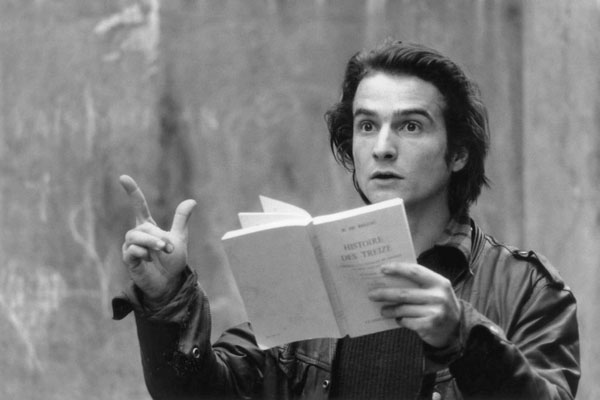Big news via Blu-ray.com. Carlotta Films and Carlotta Films US will send a new 2K restoration of Jacques Rivette‘s Out 1 (1971) out to theaters before releasing a Blu-ray edition in France and the US later this year—both versions. Jonathan Rosenbaum explains in Cinema Scope: “Arguably Rivette’s greatest achievement and boldest experiment is not a single film but two radically different works, both of them about the ’60s (utopian dreams and desperate retreats, collective work and solitude) that are drawn from the same material—a twelve-and-a-half-hour comic serial, Noli me tangere (1971), and an anguished four-and-a-half-hour puzzle film, Spectre (1973).” For more on Out 1, see James Kang‘s great entry at Critics Round Up.
Ignatiy Vishnevetsky at the AV Club: “Released in 1951, The River was Jean Renoir’s first film in color, and is now widely seen as the start of the French master’s late period; plenty of filmmakers and critics have argued for it as the highpoint of Renoir’s post-war career, equivalent to The Rules of the Game, Renoir’s pre-war consensus masterpiece…. Lacking complicated camera movements—which Renoir, shooting on location in India, didn’t have the resources to mount—or marquee stars, The River relies almost entirely on Renoir’s mastery of filmmaking basics. Yet it’s also a complex and mysterious work.”
“Welles took on The Lady From Shanghai [1948] (reissued by Mill Creek on a fine, no-frills Blu-ray) as a commercial project,” notes J. Hoberman in the New York Times. “Hardly hack work, however, the movie is highly inventive and equally personal, even self-reflexive in its tale of a man trapped in someone else’s narrative.” Hoberman also reviews Robert Montgomery‘s Ride the Pink Horse (1947), “a typical expression of postwar disillusionment—except that the returning G.I. (Montgomery) is a petty gangster gone to New Mexico to shake down a war profiteer (Fred Clark). And rather than navigating a neon jungle, he finds himself lost in the back alleys of a colonial pueblo, flooded with Anglo tourists for the annual fiesta.”
Eclipse Series 42: Silent Ozu—Three Crime Dramas is out this week. Carson Lund for Slant: “Beyond their pulpy plots, which all more or less take the form of crime-doesn’t-pay parables, there are visual flourishes that Ozu would largely dispose of as his career progressed: cropped views—of hands, feet, clocks, and other objects—that can be traced to the economy of the studio B movie; a restless camera that keeps up pace with the films’ on-the-go hoodlums; and a lively mingling of different camera heights, with Ozu’s more familiar low-angle shots juxtaposed in montage against higher viewpoints that gently undercut his characters’ larger-than-life self-images. In perhaps the most Americanized touch, Ozu’s gangsters spontaneously, and without warning, move in rhythmic synchronicity, indicating that the director’s reference points were as much silent comedy and early achievements in the musical genre as they were pre-code crime dramas.”
On a related note, for Film International, Jeremy Carr revisits Ozu’s final film, An Autumn Afternoon (1962), which is “exemplary and exceptional as a film that overflows with perhaps Ozu’s most predominant and affecting concentration: the quiet resignation of life, the good and the bad.”
Imogen Sara Smith for Criterion: “Odd Man Out [1947], Carol Reed’s first masterpiece, introduced the theme that would shape all of his best films: a stranger’s groping quest through the labyrinth of a great city.” More from R. Emmet Sweeney at Movie Morlocks.
Howard Hampton for Artforum on Vincente Minnelli’s The Band Wagon (1953): “Coming on the heels of backstage/backlot constructions like All About Eve (1950) and The Bad and the Beautiful (1952)…, its inside-Broadway satire was very much the flavor of the moment: Knowingness Parfait. There are enough layers in it to fuel a thousand postgrad theses; the wonder is that the Wooster Group hasn’t yet done a multimedia revamping. The Band Wagon was the Being John Malkovich–cum–Birdman of MGM musicals. It can be described as the intersection of stifling high aspirations (‘Shut up in our little sweatbox of the arts’) with beautifully disreputable commercial instincts (‘That’s entertainment!’).”
For news and tips throughout the day every day, follow @KeyframeDaily. Get Keyframe Daily in your inbox by signing in at fandor.com/daily.




